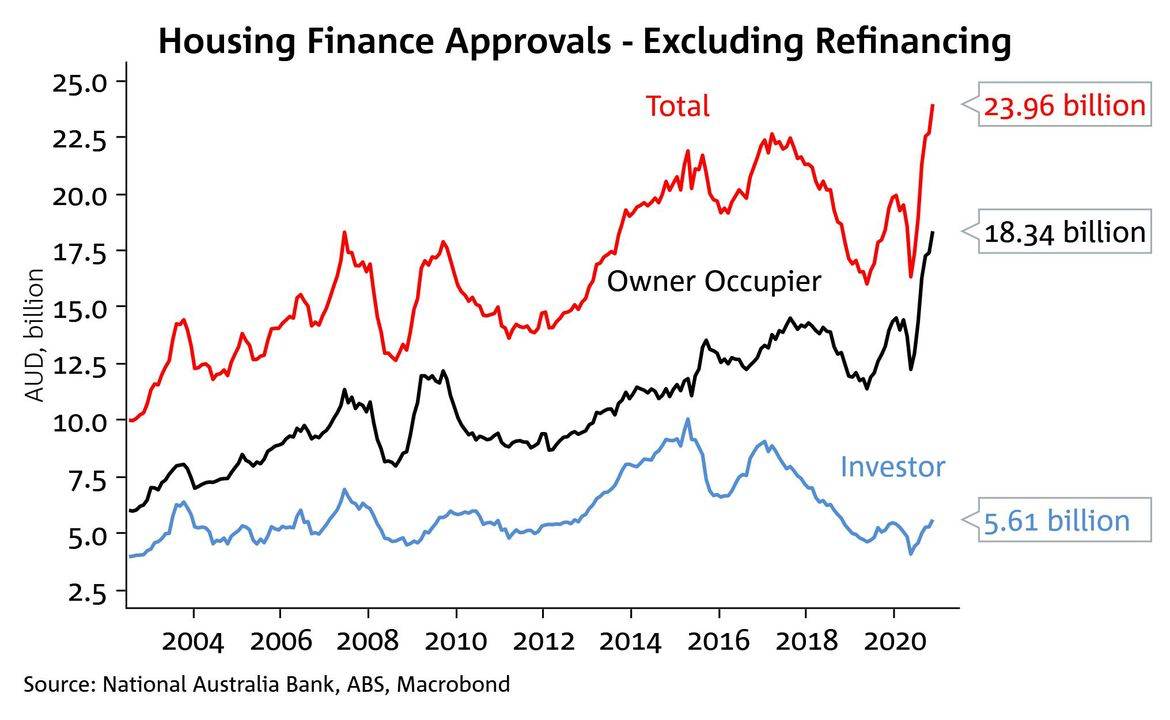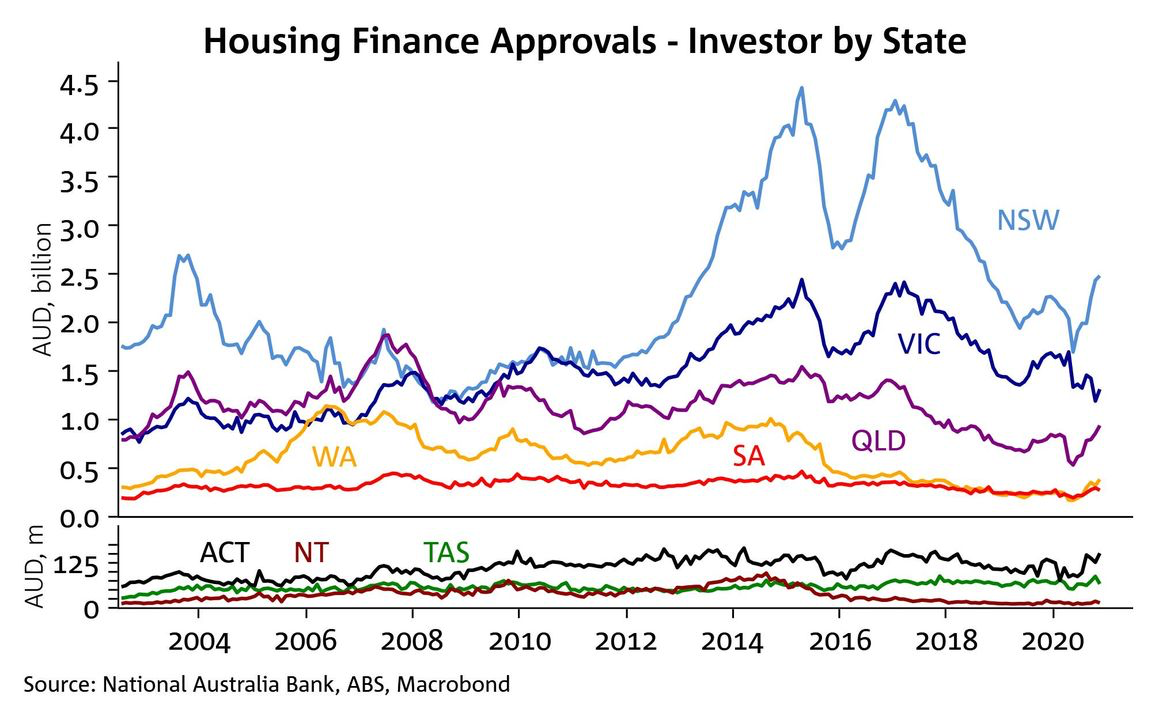It’s official. Our property markets are on the move and will perform strongly in 2021.
Last October in our regular Property Insider videos – we announce that Australia’s property markets had turned the corner after being put on pause by = the coronavirus induced lockdowns which caused “the recession we made us have.”
But now it’s official, property markets are performing strongly.
In fact, some commentators are even calling it a “Boom”, with property values rising as more Australians are looking for a new home or to upgrade their homes at a time when there are fewer properties on the market.
One of the “leading indicators” we watch carefully is home loan activity.
The most recently released ABS finance data reported that the value of new home loans taken out in November set a new national record.
Property investment is a game of finance with some real estate thrown in the middle, and when finance flows more freely and people take out loans before they commit to purchasing a property, then next logical result is rising property prices
There is a jigsaw puzzle of pieces that come together to influence our property markets, but as I said, there is now pretty strong evidence that all the pieces are coming together to create the biggest property boom in Australia has seen in a generation.
Let’s look at some of the new pieces to the puzzle that occurred over the last month:
1. Australia’s economy is recovering faster than most expected
It seems like we may have a V shape recovery after with most economists expecting Australia’s economy to rebound strongly in 2021.
Delloite Access Economics forecasts that Australia will grow by 4.4% this year, with Victoria to be the standout performer, with its economy bouncing 5.3%
“COVID numbers are very low, the vaccine news is excellent, confidence is rebounding, Victoria is catching up to the recovery already underway elsewhere, there are heartening developments in job markets, and China’s trade war with Australia has – so far at least – actually added to national income rather than hurt it,” chief economist Chris Richardson wrote.
While the damage of last year hasn’t disappeared, it is slowly unwinding, according to Richardson.
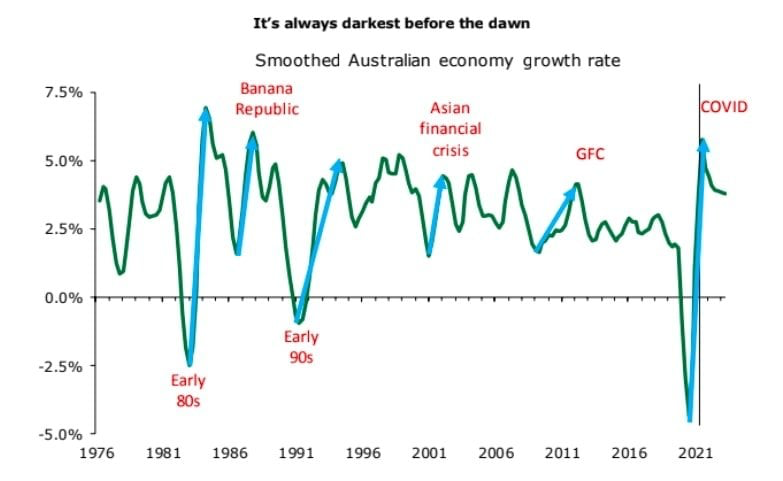
Source: Deloitte Access Economics
2. Unemployment is falling
Between November and December 2020, an extra 50,000 Aussies found a job as our unemployment rate fell to 6.6%.
The fact that nearly 13 million Aussies are at work is another significant sign of the nation’s rebounding economy.
35,700 new full-time workers entered the workforce in December while 14,300 Australians found part-time work. Clearly we're working our way out of recession faster than most expected.
However, unemployment is expected to take two to three years to return to pre-pandemic levels, with weak population growth being a drag.
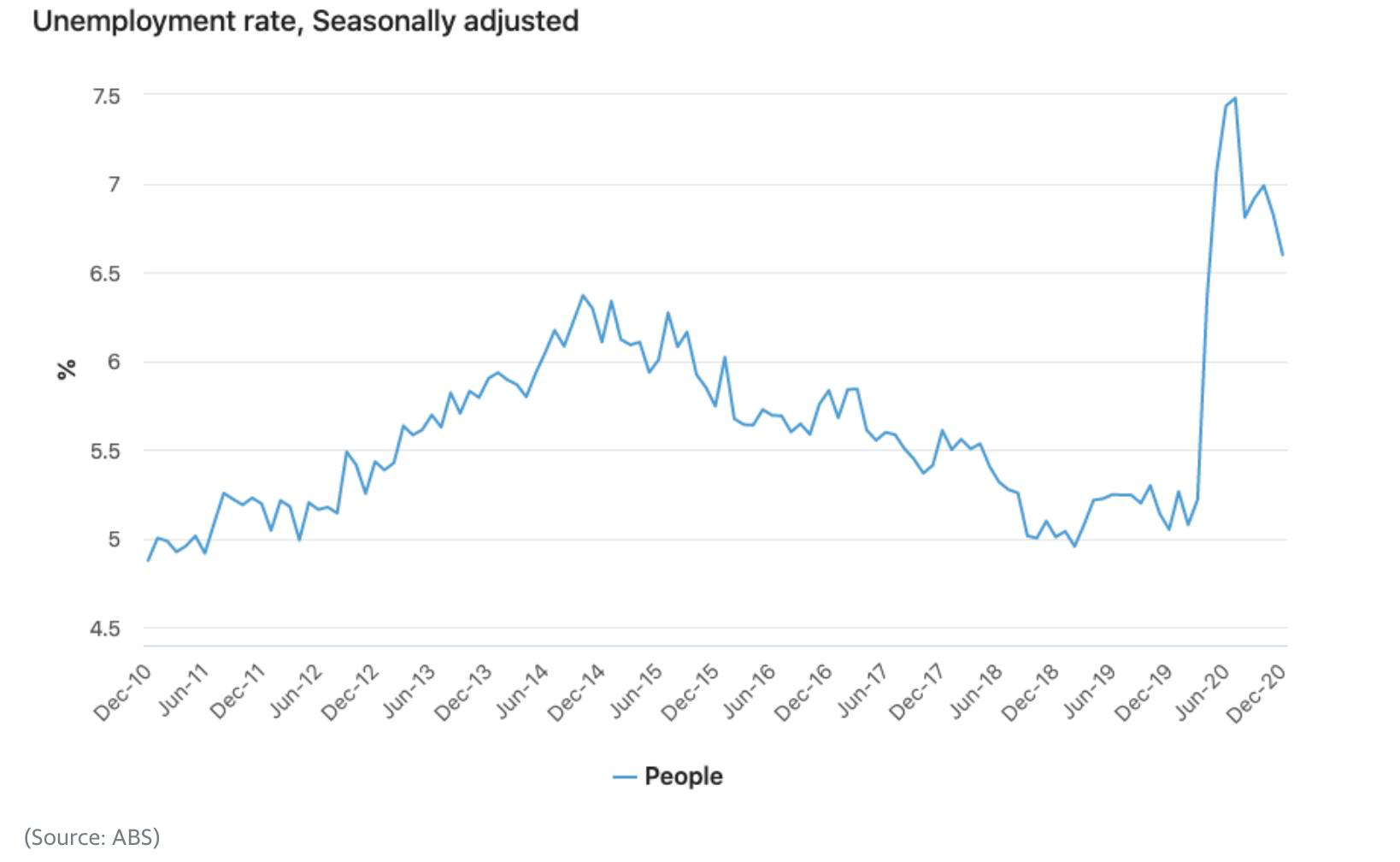
Source: Finder.com.au
3. Housing loan approvals surge to be 24.4% above pre-pandemic levels and highest on record
New housing loan approvals continued to surge in November, with the recently released ABS Lending Indicators showing borrowing increased 5.6% over the month and 23.7% year on year and this bodes well for our property markets
Investors, who had largely retreated from the market in the first half of 2020, posted a 6.0 per cent rise in November, the sixth consecutive monthly increase.
And lending in Victoria surged by 20 per cent over month as pent-up buyers did the rounds at onsite auctions and open homes when their lockdown lifted.
Source of Charts: NAB
4. Consumer and business confidence is rising
Consumer optimism and home buying sentiment has reached a pre-pandemic high according to research by finder.com.au.
67% of Australians think now is a good time to buy a property, up from 42% in April 2020.
This figure is an all-time high since Finder began tracking the stat in May 2019.
The survey also found that those expecting house prices in their area to significantly increase in value is also at an all-time high of 19% – up from just 5% in September 2020.
Those who expect property values to "somewhat increase" has jumped to 44% from a low of 18% back in April.
This is another positive for our property markets because when homebuyers and investors feel confident about the future of their purchase decisions, they are much more likely to enter the market.
Of course, this is the type of self-fulfilling prophecy at FOMO will set in and the property cycle will continue (as it always does).
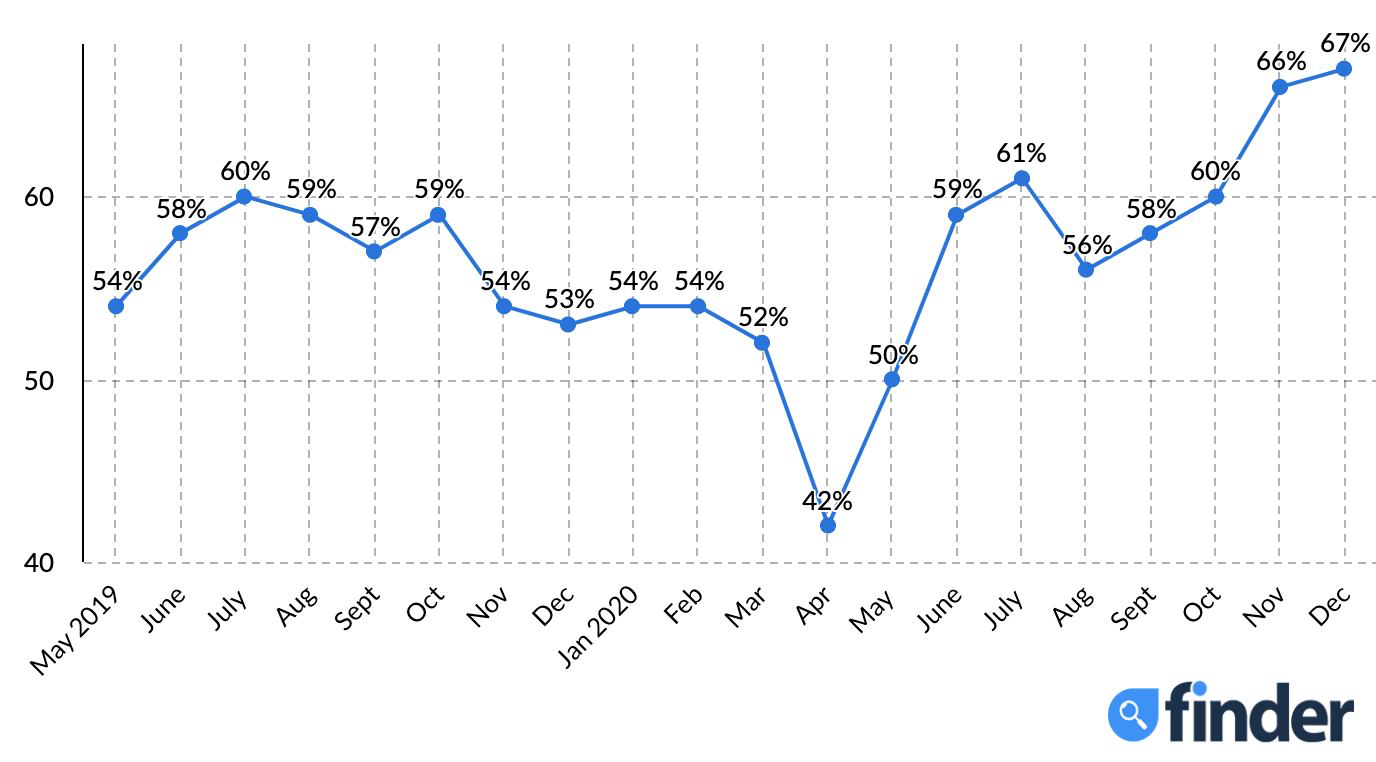
Source: Finder.com.au
5. The number of properties for sale in Australia is beginning to dry up.
Property buyers are heading back into our housing markets in droves, keen to get a foothold before property values surge.
But they are finding limited stock, with 7 of our 8 capital cities having significantly less properties for sale than 12 months ago.
Strong demand at a time of limited supply must lead to property price growth, but don't get lulled into a false sense of security by our rising property markets.
As always correct property selection will be critical for the long-term performance of your investments. You can't expect to get top investment performance from a secondary property.
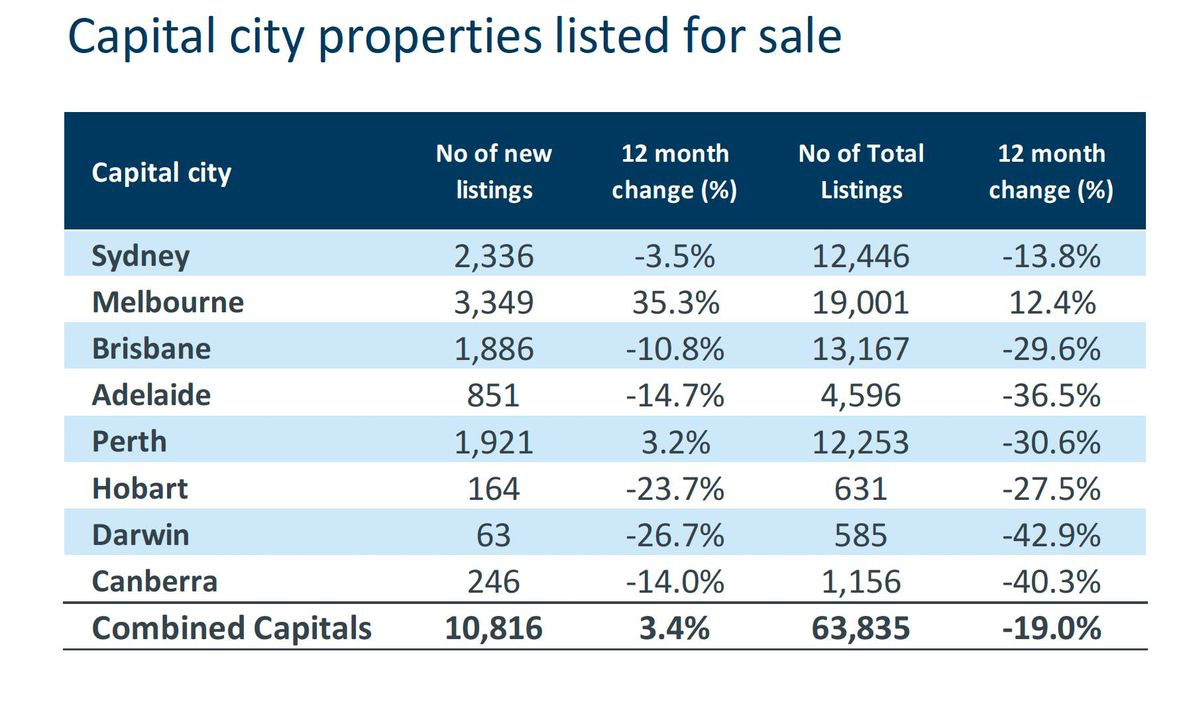
Source: Corelogic
6. First home buyers are making their mark
At the end of last year we experienced the biggest lift in new home sales in 20 years, despite the pandemic induced recession
Clearly there was a rush to take up the various grants offered.
But remember, these were designed to assist the building industry rather than homeowners which means we’ll have a positive flow on effect through effect on our economy.
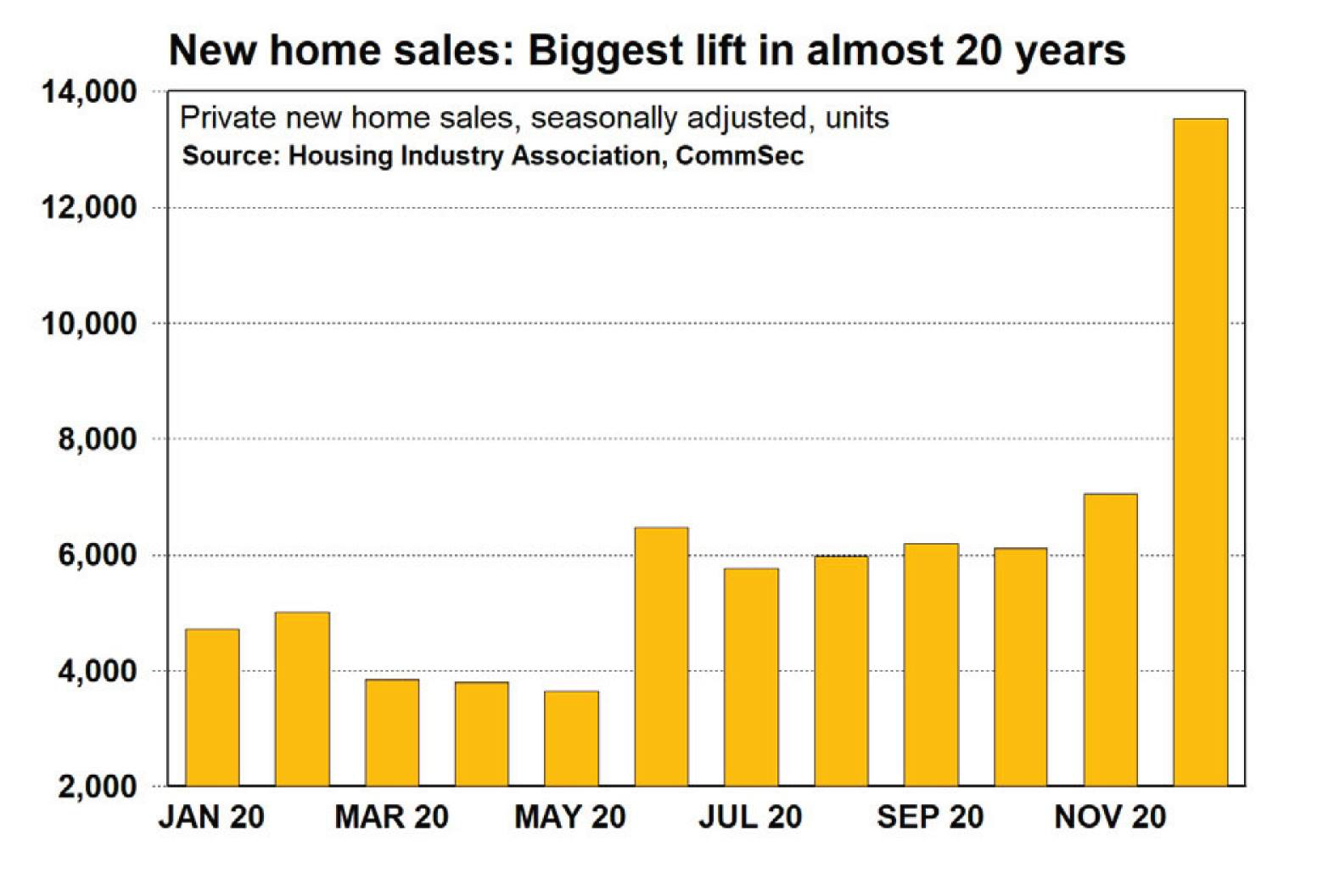
7. We are not going to fall of the fiscal cliff – the mortgage time bomb isn't going to explode.
APRA (the Australian Prudential Regulatory Authority) released data on loan deferrals to November 2020, which reveals that the number and value of deferred mortgages has continued to plunge.
The number of mortgage deferrals had shrunk from a peak of 488,249 mortgages in May to 118,919 mortgages in November.
As a percentage the share of total mortgages deferred plunged from a peak of 11% in May to just 2.8% in November.
Not surprisingly, Victoria had the highest share of mortgages deferred in November, (the period being reported) but things have improved considerably since then.
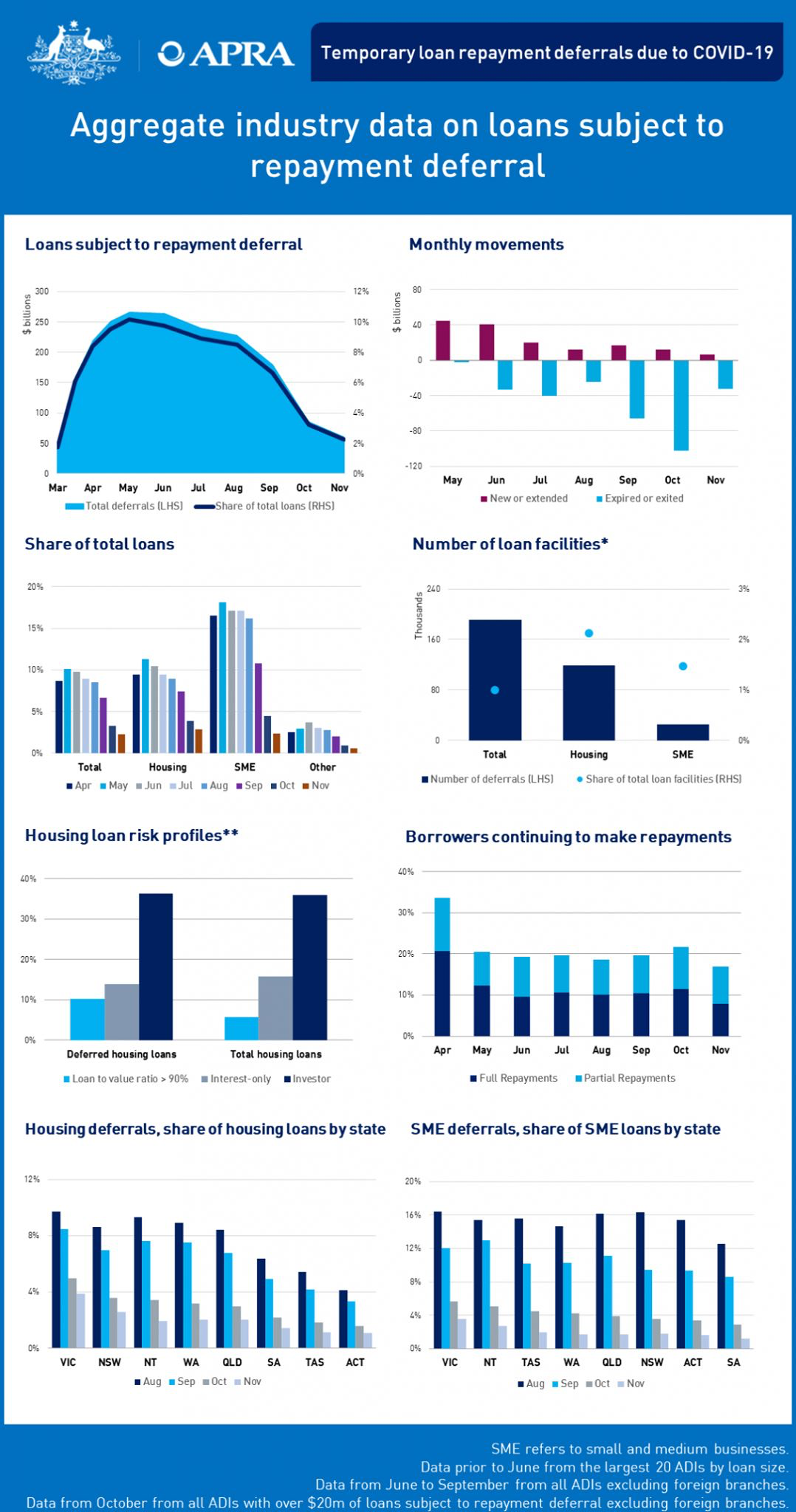
Source: APRA
8. Even in the traditionally quiet month of January, property values have been rising
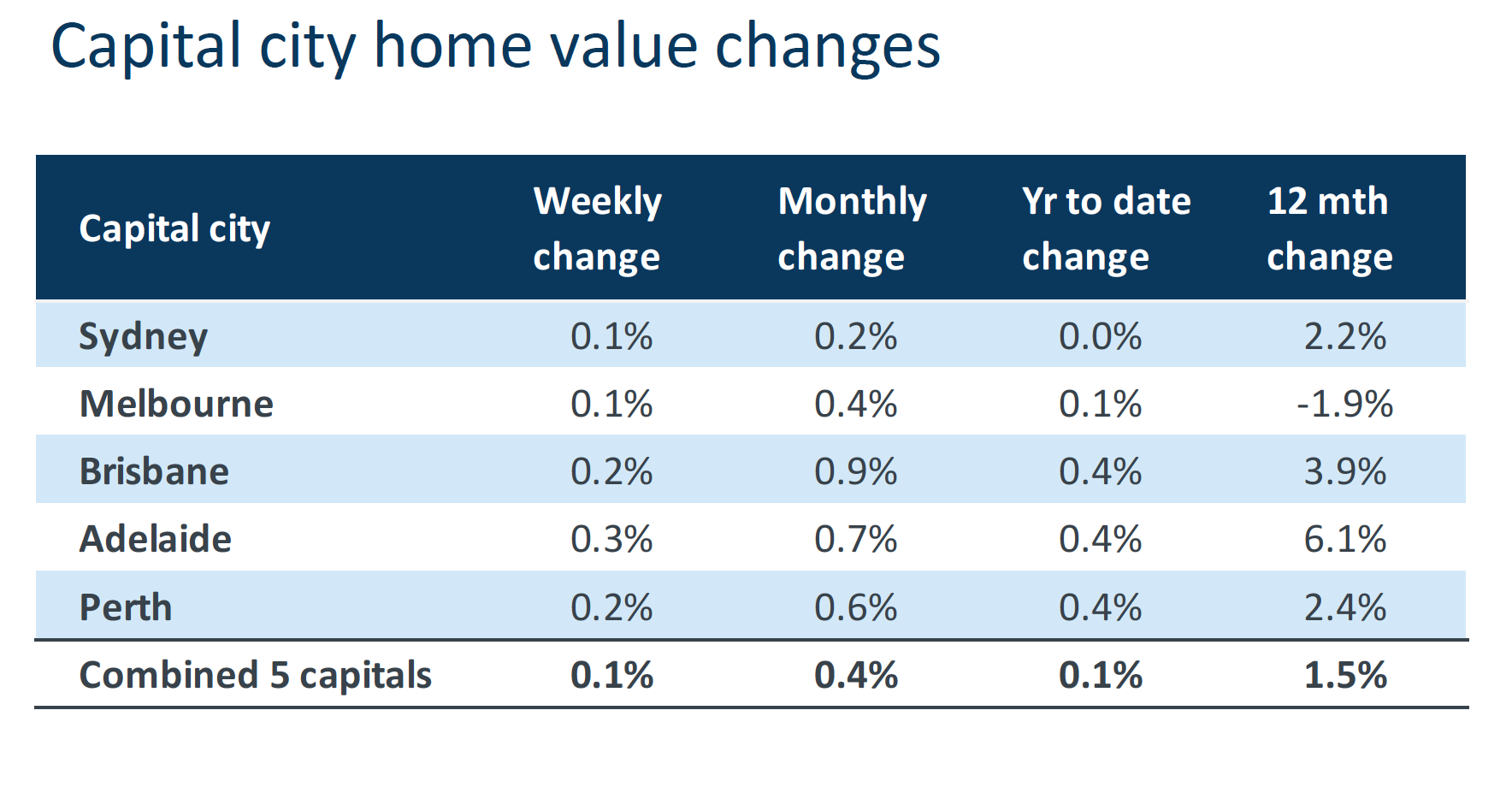
Source: Corelogic January 20th 2021
The bottom line….
While there are still many challenges ahead for our economy and our property markets, there are now many reasons to be optimistic about selected segments of the Australian property market, particularly in the long term.
While property values showed resilience through the difficult Covid19 induced property cocoon of 2020, the rental markets in certain parts of Australia were hit quite hard.
And while prolonging vacancies and falling rentals have concerned some investors, others have fared quite well as it has really been a tale of two rental markets around Australia.
On the one hand house rentals have remained firm and in fact increased significantly in some cities that were largely unaffected by COVID-19, while on the other hand apartment rentals have slums, particularly in the Melbourne and Sydney CBD’s.
..........................................................
 Michael Yardney is CEO of Metropole Property Strategists, which creates wealth for its clients through independent, unbiased property advice and advocacy. He is a best-selling author, one of Australia’s leading experts in wealth creation through property and writes the Property Update blog.
Michael Yardney is CEO of Metropole Property Strategists, which creates wealth for its clients through independent, unbiased property advice and advocacy. He is a best-selling author, one of Australia’s leading experts in wealth creation through property and writes the Property Update blog.
To read more articles by Michael Yardney, click here
